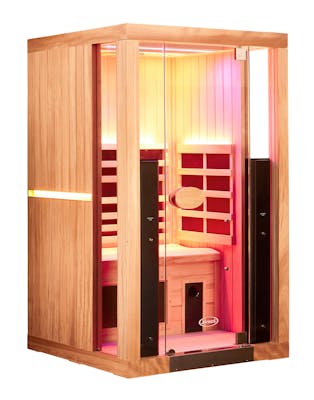Choosing the Right Red Light Therapy Device
Choosing the right red light therapy device is essential for achieving optimal results. Consider the following when selecting a device:
- The appropriate device and wavelength to enhance treatment effectiveness
- The size of the device
- The features of the device to ensure it meets your individual therapeutic needs
Carefully selecting a red light therapy device for your at home device can maximize the benefits and results from therapy. By choosing a device that fits your specific needs, you can ensure that you are using red light therapy consistently and effectively.
The Science Behind Red Light Therapy
The science behind red light therapy lies in its ability to enhance mitochondrial function, leading to increased energy production in cells. By boosting mitochondrial production, red light therapy improves cellular function and promotes healing. This process enhances overall cellular health, making it an effective treatment for a variety of conditions.
Research suggests that red light therapy can reduce inflammation and reduce pain from conditions like arthritis and tendinopathy. Additionally, studies indicate that red light therapy can improve skin conditions by promoting collagen production, which enhances skin elasticity and appearance. This approach can be a valuable aspect of pain management.
Understanding the scientific mechanisms behind red light therapy helps appreciate how it can promote healing, reduces pain, and improves overall health during the healing process. This knowledge reinforces the benefits of incorporating red light therapy into your routine.
Summary
In summary, red light therapy offers a wide range of benefits, from skin rejuvenation to pain relief. By understanding how often to use red light therapy, customizing your routine, and ensuring safety, you can maximize the therapy’s effectiveness. Incorporating red light therapy into your skincare routine and choosing the right device are crucial steps in achieving optimal results.
With a solid understanding of the science behind red light therapy and the differences between red and near-infrared light, you can tailor your treatments to meet your specific needs. Embrace the power of red light therapy and transform your health and beauty regimen.
Frequently Asked Questions
How often should I use red light therapy for optimal results?
For optimal results, start with three to five red light therapy sessions per week and adjust based on how your body responds. Listen to your needs and make changes as necessary!
Can I use red light therapy daily?
Absolutely, you can use red light therapy daily, especially for pain relief. Just keep your sessions to about 10 to 20 minutes. It's all about consistency for the best results!
What precautions should I take when using red light therapy?
It's important to consult a healthcare provider before starting red light therapy, use protective goggles, and stick to the manufacturer's guidelines to avoid overexposure. This way, you can enjoy the benefits safely!
How do I integrate red light therapy into my skincare routine?
To effectively integrate red light therapy into your skincare routine, begin with a good cleanse, apply active ingredients like vitamin C, and then finish with moisturizer after your session. This way, you maximize the benefits and keep your skin hydrated!
What is the difference between red light and near-infrared light therapy?
Red light focuses on improving skin health by penetrating the outer layers, while near-infrared light goes deeper to aid muscles and joints, providing pain relief and boosting cell metabolism. So, if you’re looking for skin benefits, go for red light; for deeper tissue issues, near-infrared is the way to go.

















